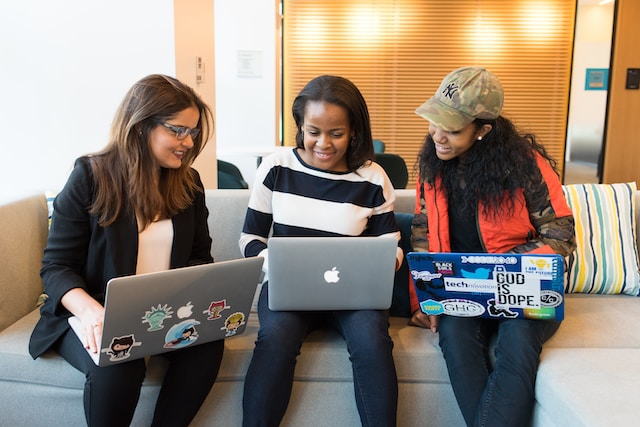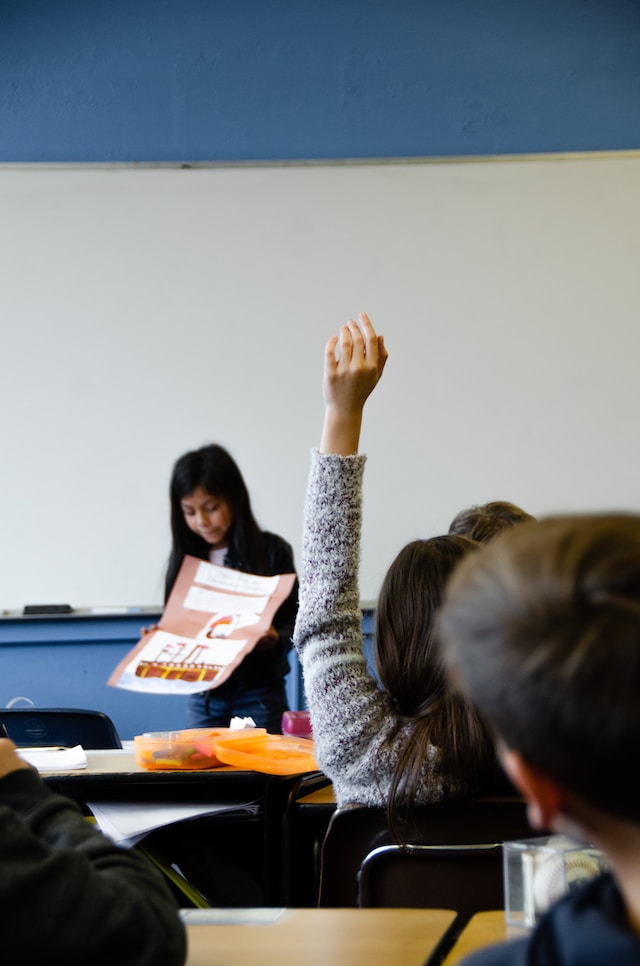What is Constructivism?
Knowledge can not be transmitted to a student because the learners construct their own understanding of the world. Following Cognitivism principles, learners have an active role through human work and interaction.
Learners have to resolve the cognitive conflict between the existing internal structure (schema) and the external reality to restore the cognitive equilibrium. When students learn new knowledge, they can follow two processes:
- Assimilation: assimilate new knowledge into the existing schema.
- Accommodation: change, modification or replacement of the previous schema based on the new learned knowledge and understanding.
Vygotsky also introduces the theory of Social Constructivism establishing that learners develop new knowledge and understanding through interaction with others.

We should reflect about what type of activities we are including in the learning experience:
- Passive activities: reading text or watching a video.
- Active and engaging activities: classroom discussions, peer-to-peer dialogues, and group projects.
Learning experiences should include collaborative work among peers so the students construct knowledge through student interaction.
Constructivism is closer to Cognitivism principles, however it goes beyond because learners are not just processing the information internally, they are encouraged to reason, reflect, and justify their understanding.
Knowledge is subjective and each person will construct their own interpretation of that knowledge. Actually, knowledge is constructed through discussion, social interactions and collaboration with others.
Considering that social interaction is key for constructing knowledge, communication between learner, teacher and others is an essential part in the learning process. Technology can not replace this communication but can facilitate it.
Our goal is to create meaningful learning experiences that engage our learners so they can increase that intrinsic motivation for the task itself.
One of the limitations of Behaviorism was that Motivation was not included in the learning process. Constructivism considers motivation as a critical factor in the engagement and persistence of a learner. There are two types of motivation:
- Intrinsic: inherent drive and enjoyment in an activity for its own sake, without the need for external rewards.
- Extrinsic motivation: relies on external factors such as rewards, praise or punishments.
Constructivism Psychologists
constructivists by Pilar GonzálezImplications for Instructional Design
Vygotsky’s Zone of Proximal Development explains how an instructor is necessary in order to maximize learning. However the ZPD also happens when we create groups and combine less competent children to learn from those who already have mastered a skill. Instructional Designers could incorporate mentor programs in their learning experiences and pair learners depending on level of proficiency.
Learners know by doing, so connections with the real world are also encouraged by Constructivism. If students can see a connection with their experiences, the learning will have a purpose.
Kellers ARCS Model by Pilar GonzálezApplying Social Constructivism to Instructional Design
Following Vygotsky’s theory, we can apply some strategies to create engaging learning experiences:
- Reciprocal teaching when collaborative groups of two to four students take turns leading dialogues on a given topic.
- Cooperative Learning encourage learners to work together in small groups or pairs. In online settings, expert peers can play a crucial role by offering guidance and assistance tailored to the ZPD of less mature learners.
- Situated Learning emphasizes the importance of learning within meaningful contexts and through active participation. In an online environment, educators can design activities that involve real-world scenarios or authentic tasks
- Anchored Instruction offers another pathway to active engagement in online learning, designing learning environments around captivating topics or real-life problems.
Strengths and limitations of Constructivism in Education

In Education, teachers should focus on creating a social context appropriate for learners to construct knowledge. A rich learning environment will include:
- Collaborative work in small groups.
- Projects.
- Individual reflection and analysis of the knowledge presented.
- Problem-solving approach.
- Hands-on experiences.
- Connections with real-world
Students should be able to reflect and incorporate their own past experiences when they are learning new knowledge. Living in a multicultural world, creating learning experiences where students are encouraged to share their background and culture, is one of the goals for any teacher.
If we consider that students construct their own learning, teachers will have a facilitator role. As facilitators, we support that individual construction of knowledge in our students.
The focus is not the teacher or the content, but the learner
In Education K-12 is especially important the concept of scaffolding (Bruner and Vygotsky) that we mentioned earlier. Teachers differentiate the support needed for each student and gradually remove this support when the learners master the skill or concept.
These are a few strategies to scaffold in Education k-12:
- Offering hints.
- Modeling problem-solving strategies.
- Breaking down complex tasks into manageable steps.
- Providing visuals or any other support materials.
- One on one support.

Finally, one of the limitations is the lack of structure, especially for learners that are not used to reflection and have an active role in their learning.
Another risk of having the students to work in a group is the inconsistency in the level of participation of each member.
Learning Scenario based on Constructivism
I decided to create a learning scenario to teach an X Company all the protocol for fire drills. The purpose of the training is also to clarify roles and responsibilities in the recently created Emergency Team.
The training is individual and online, so the employer will need their computers and a connection to the Internet.
The content developed in the Zone of Proximal Development will be to incorporate the new changes to the protocol and the roles and responsibilities in the Emergency Team.
Scaffolding Strategies
- Offering hints: In the Knowledge Check, if the answer is incorrect, the learner will have a link to the content needed to answer correctly.
- Modeling problem-solving strategies: At the beginning of the Knowledge Test and during the training, there will be some questions to apply the content in practical situations. The first question of the test will be a practice example.
- Breaking down complex tasks into manageable steps: Tra training is divided in 3 parts and the table of contents is presented at the beginning.
- Providing visuals or any other support materials: The training will be specific for the X Company, and real pictures and visuals will be added to the presentation.
- One on one support: Chat and a discussion forum will be available for questions and support.
Social Constructivism strategies
- One on one support: Chat will be provided and a discussion forum will be available for questions and support.
Motivation strategies following Keller’s ARCS Model:
- Attention:
- Use of humor: Create a character that leads the learner through the content with bubble talks with some humor.
- Real world examples: Visuals of the real building and photos of the people involved in the Emergency Team.
- Relevance:
- Link to previous experiences: connection with their experiences in fire drills during the last year.
- Usefulness of the course: Purpose and content of the training is established at the beginning and since it involves safety and security, it is relevant for all the employers at the Company.
- Give choice: The learner can choose the order of the contents. The Knowledge Check will be at the end.